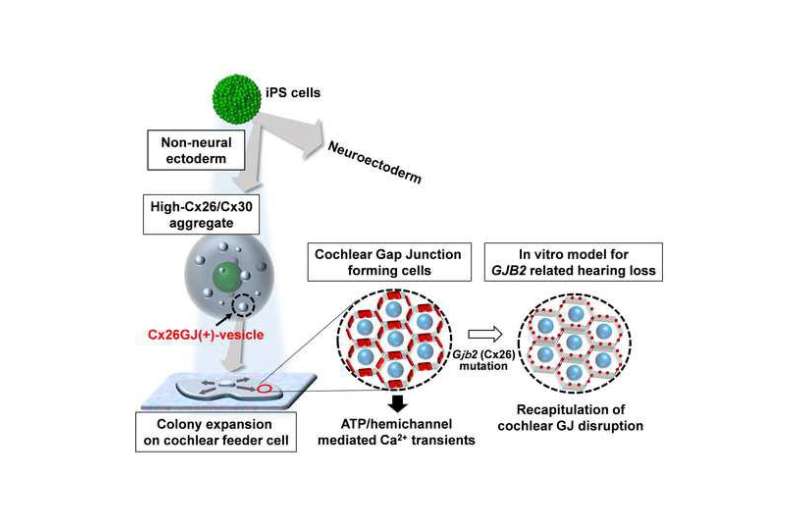Stem cells provide sound in vitro models for deafness

A collaboration, including researchers from Juntendo University, demonstrates differentiation from stem cells into specialised cells thought to be the most important therapeutic target for the treatment of hereditary deafness.
One in 1000 children suffers deafness or hearing loss, and hearing is the most common sense to be affected by congenital disease. Deafness at birth is often caused by mutations in a specific gene known as Gap Junction Beta 2 (GJB2), which codes for the protein connexin 26. In some populations, mutations of this gene are responsible for as many as half the instances of congenital hearing loss. Now, Kazusaku Kamiya and the co-authors of a recent report demonstrate a means of producing supplies of these cells on demand for use in therapeutic studies.
"Human cochlear cells are not readily accessible for biopsy or direct drug administration because of anatomical limitations," state the researchers in their report. "Therefore, ES/iPS [embryo stem/induced pluripotent stem] cells are an important tool for studying the molecular mechanisms underlying inner-ear pathology as well as for generating cells for replacement therapies."
To culture the cells, the researchers followed standard protocol for the first seven days, at which point specific proteins were added to increase mRNA expression of connexins. On days seven to 11, the cells were transferred to a flat 2-D culture with inner-ear cells that are especially resistant to enzymes that break down proteins. They successfully cultured induced pluripotent stem cells that differentiated into gap junction plaque cells expressing connexin 26.
The researchers were also able to demonstrate that their stem-cell-derived gap junction cells were functionally and structurally characteristic of developing cochlear cells. Importantly, the cells differentiated from mice that were deficient in connexin 26 reproduced cellular characteristics of congenital hearing loss. The researchers conclude, "It is expected, then, that these iPS derived cells, which can be obtained from patients, will be particularly useful for drug screening and inner-ear cell therapies targeting GJB2-related hearing loss."
More information: Ichiro Fukunaga et al. In Vitro Models of GJB2-Related Hearing Loss Recapitulate Ca2+ Transients via a Gap Junction Characteristic of Developing Cochlea, Stem Cell Reports (2016). DOI: 10.1016/j.stemcr.2016.10.005
















